Rajasthan mandana, "Villages around Bundi" — part 4
Perched on a hillock, it is a densely built up area and houses adapt themselves to uneven grounds by spreading harmoniously their volumes on different levels. Alignments, projections and recesses allow glimpses of terraces overlooking other open spaces. This is how I notice freshly painted mandana.
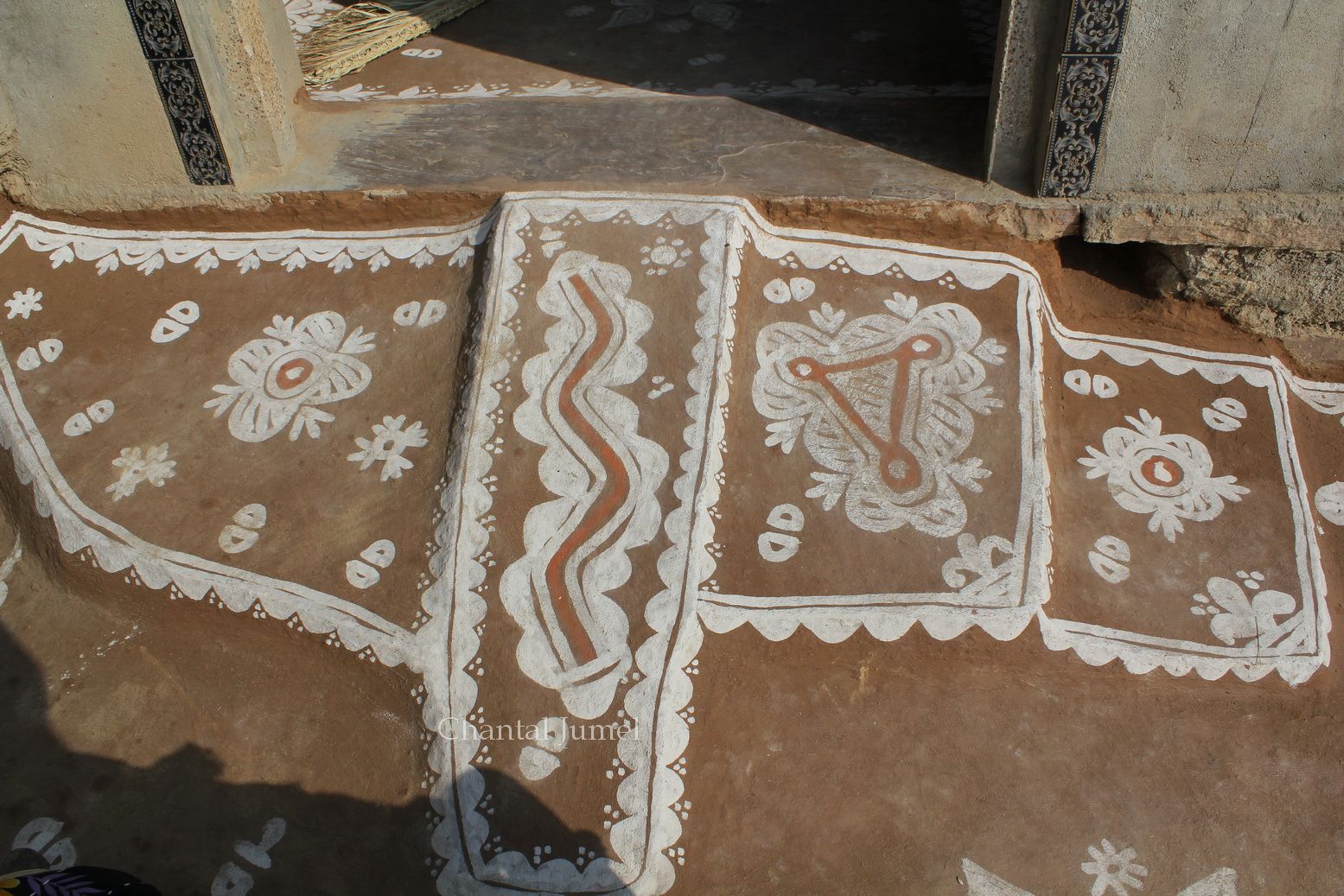
The next village is mainly inhabited by Meena who belong to one of the most ancient tribes of Rajasthan. They live in the fertile plains of the East and are divided into two major clans: the high status Hindu landowners and the others who possess no land. In the 19th century, in spite of their prestigious ancestors, they were declared “criminal tribes” by the British and that until 1952 when the offensive list was repealed. Perched on a hillock, the village is a densely built-up area, and the houses adapt to uneven grounds by harmoniously distributing their volumes on different levels. Alignments, protrusions, and recesses allow glimpses of terraces overlooking other open spaces. This is how one discovers freshly painted mandana.
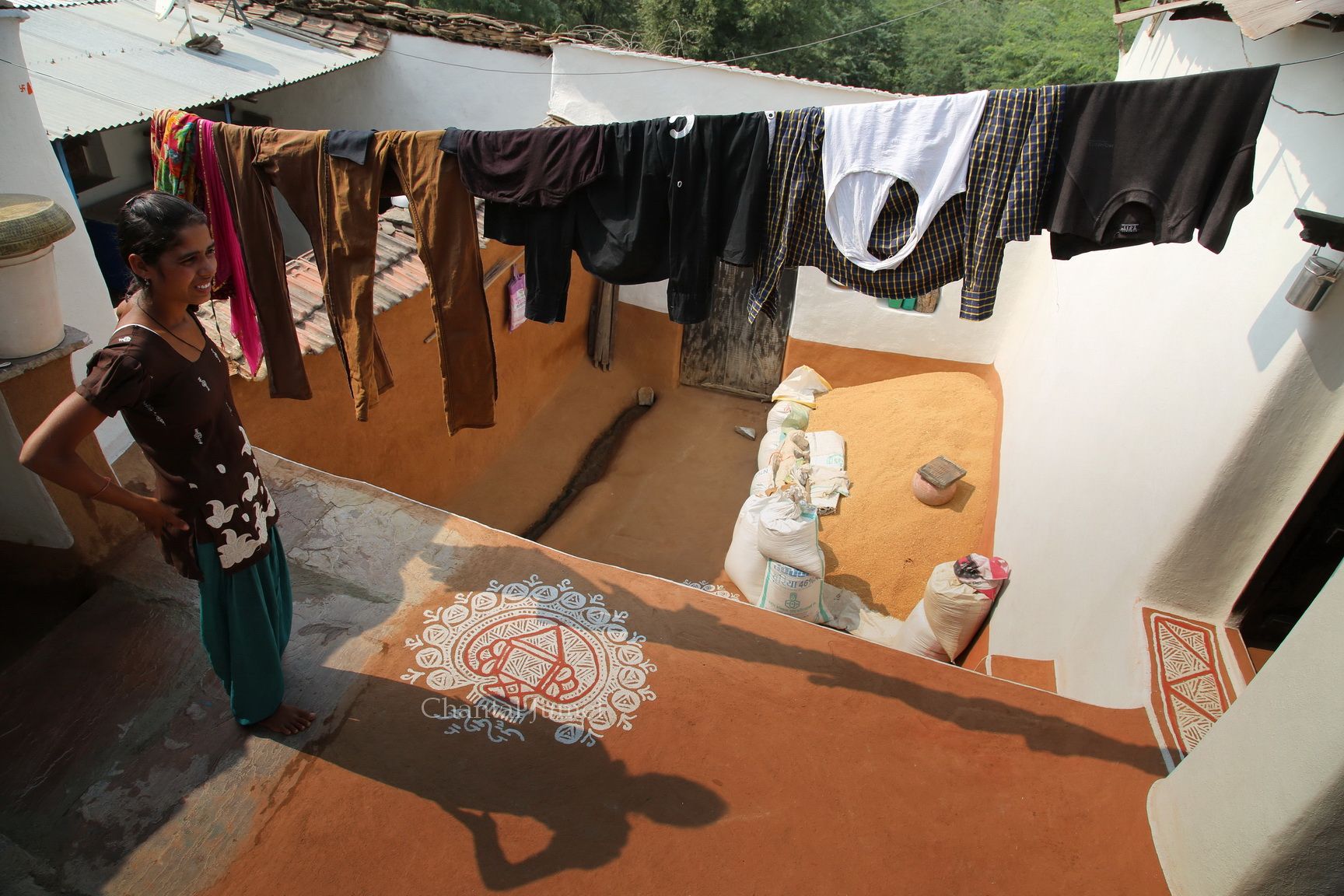
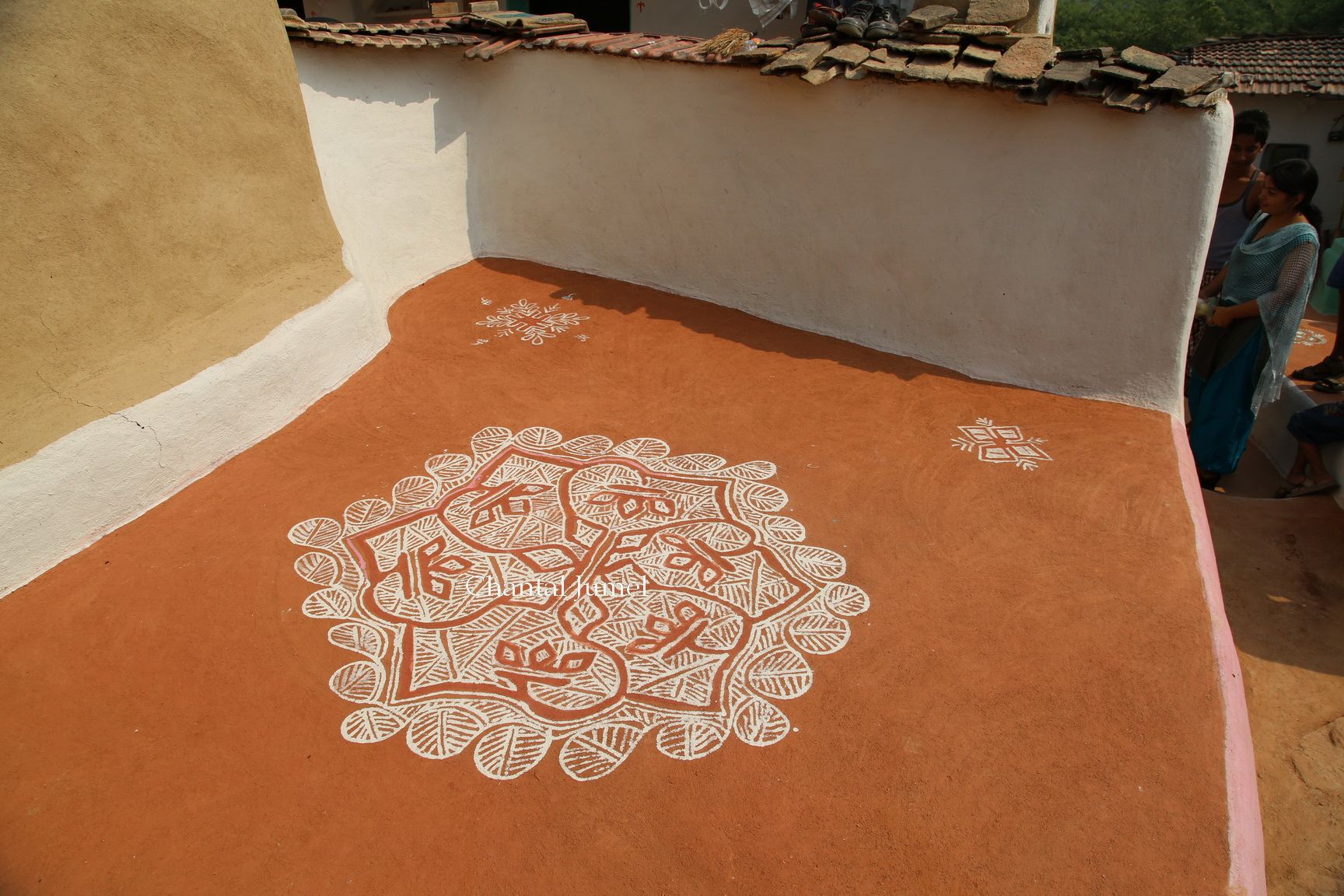
My enthusiasm is a little tempered by my guide’s assertions who underlines the undeniable impoverishment of the mandana repertoire and creativity. According to him, the countryside urbanisation and the construction of cement houses are the main causes.

The villagers are slowly moving away from the mud walls which require frequent repairs after monsoons. While cement is becoming a symbol of modernity and social achievement, it contributes widely to the disappearance of wall paintings called thapa. The younger generation, more educated than their elders, are reluctant to paint what they see as simplistic designs.
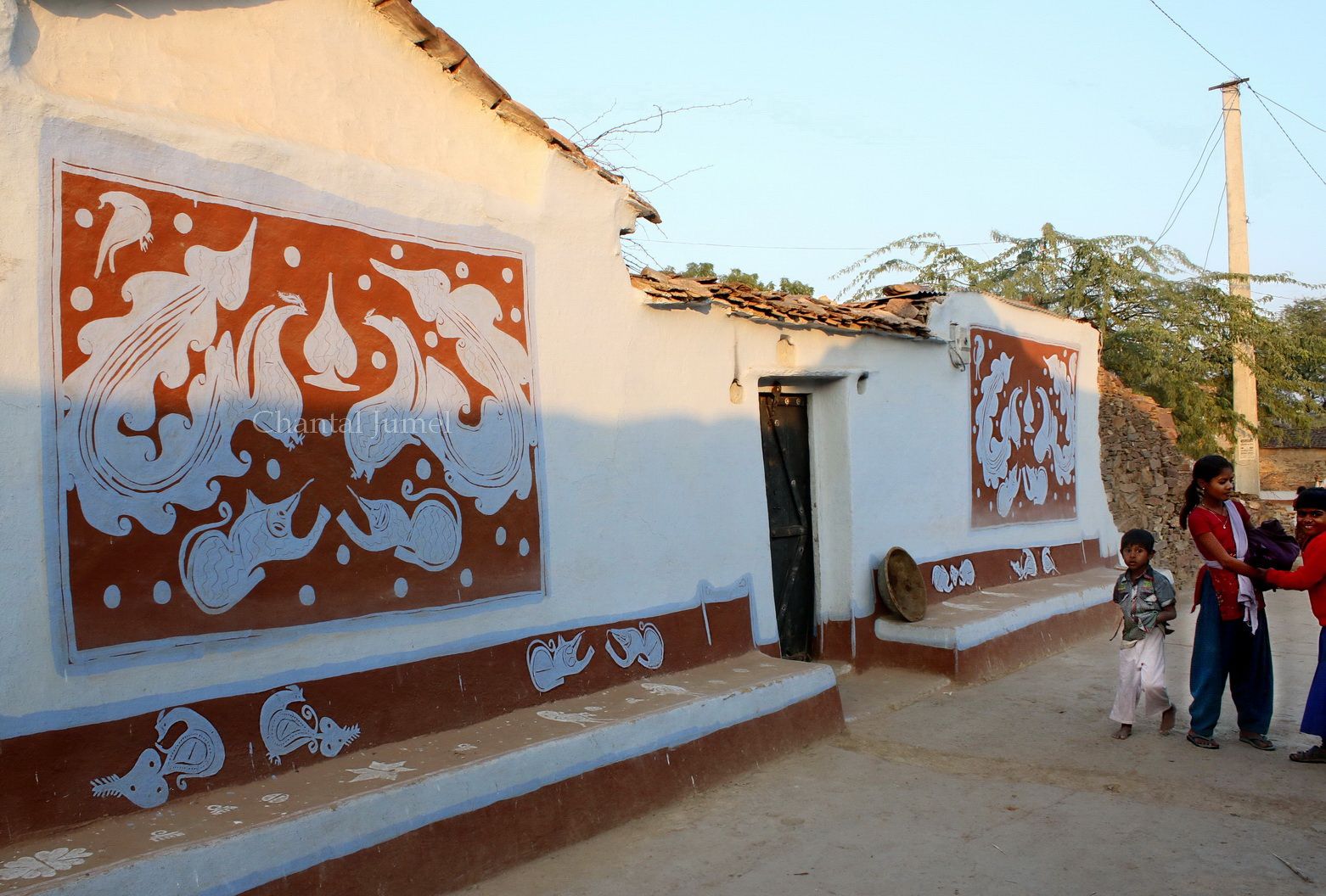
Entering the houses
Strolling through the village lanes attracts the attention of people who ask my friend about my visit. Thanks to him, we are invited to enter the houses and each time it is a source of wonder; there is hardly a place in the courtyards and rooms that has not been metamorphosed by the creative hands of the women.
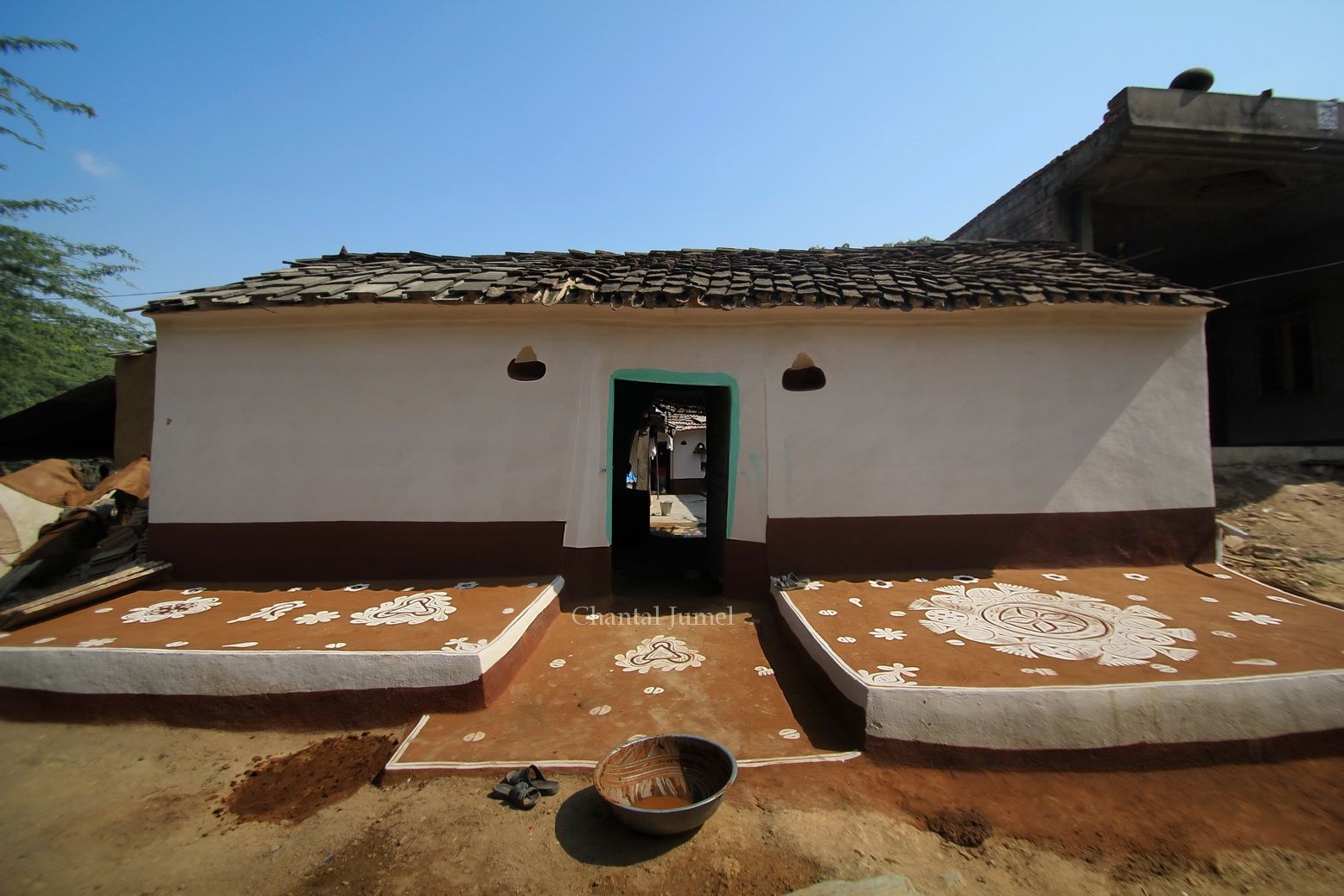
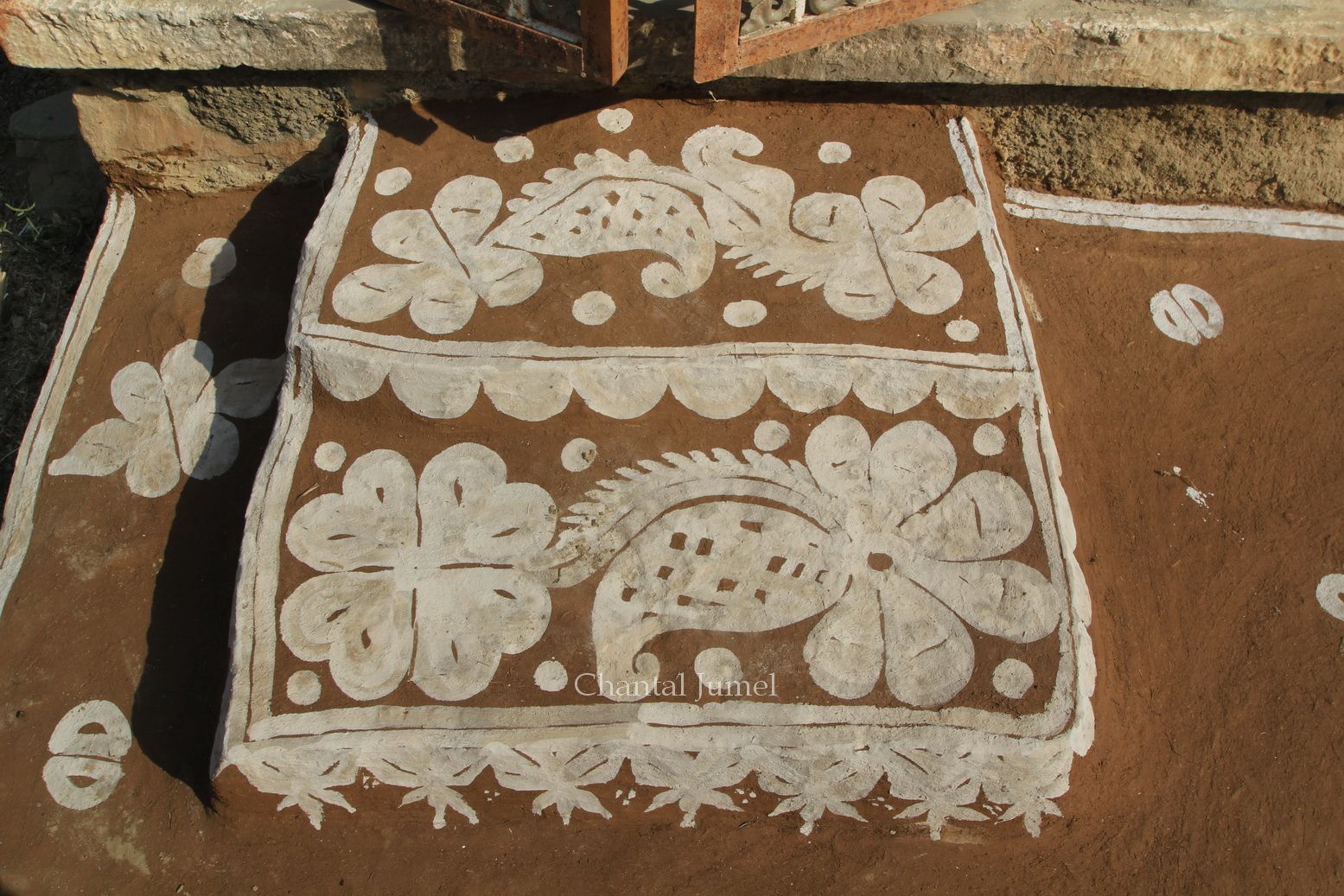
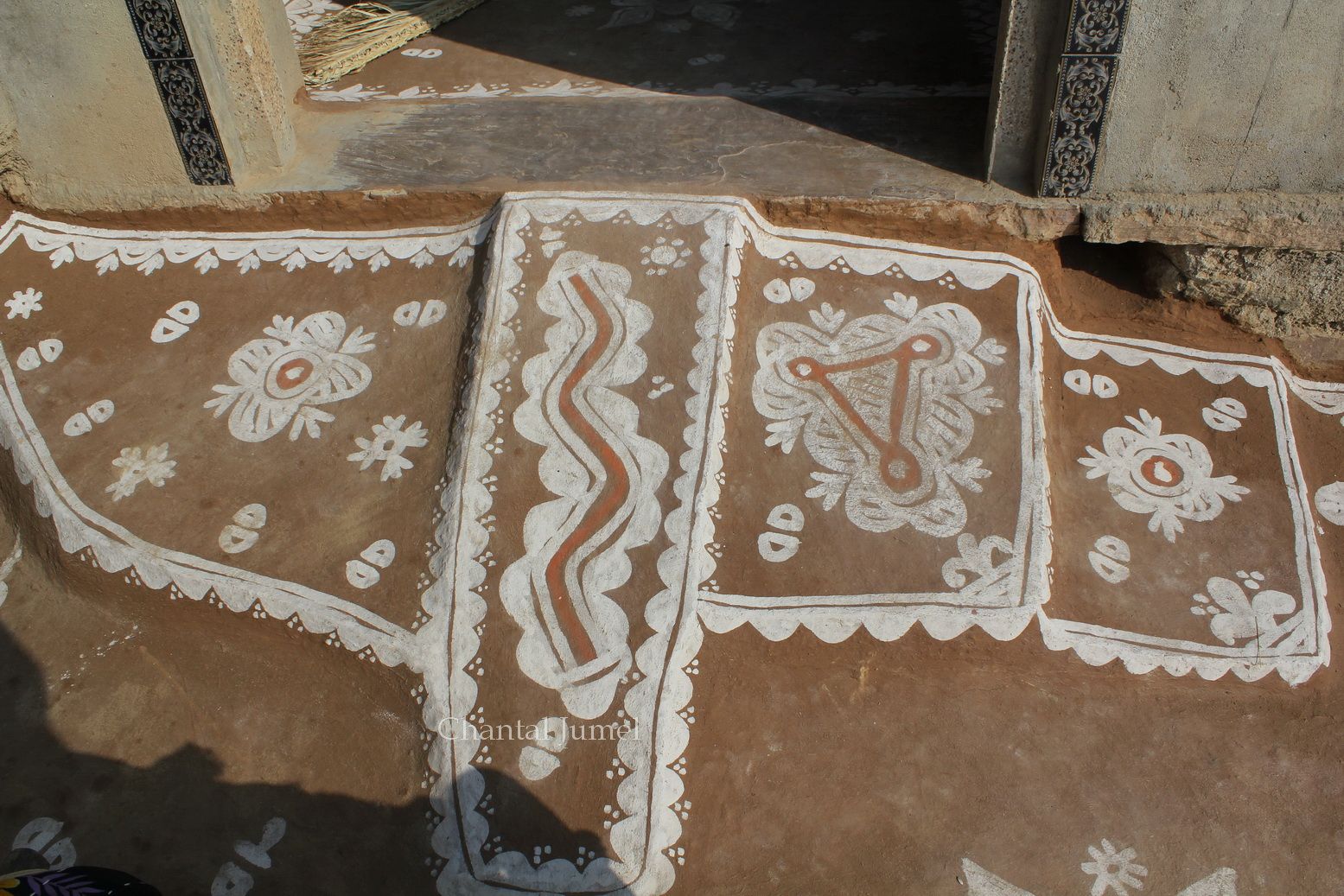
The walls become luminous, and only the cast of the shadow highlights the stylised patterns and delicate lines that emanate from the hands of the women. The lines flow and underline the edges of the terraces and platforms, delimit the perimeter of the interior courtyards, climb one by one the steps of a staircase to finally fill its surface with animals or plants.
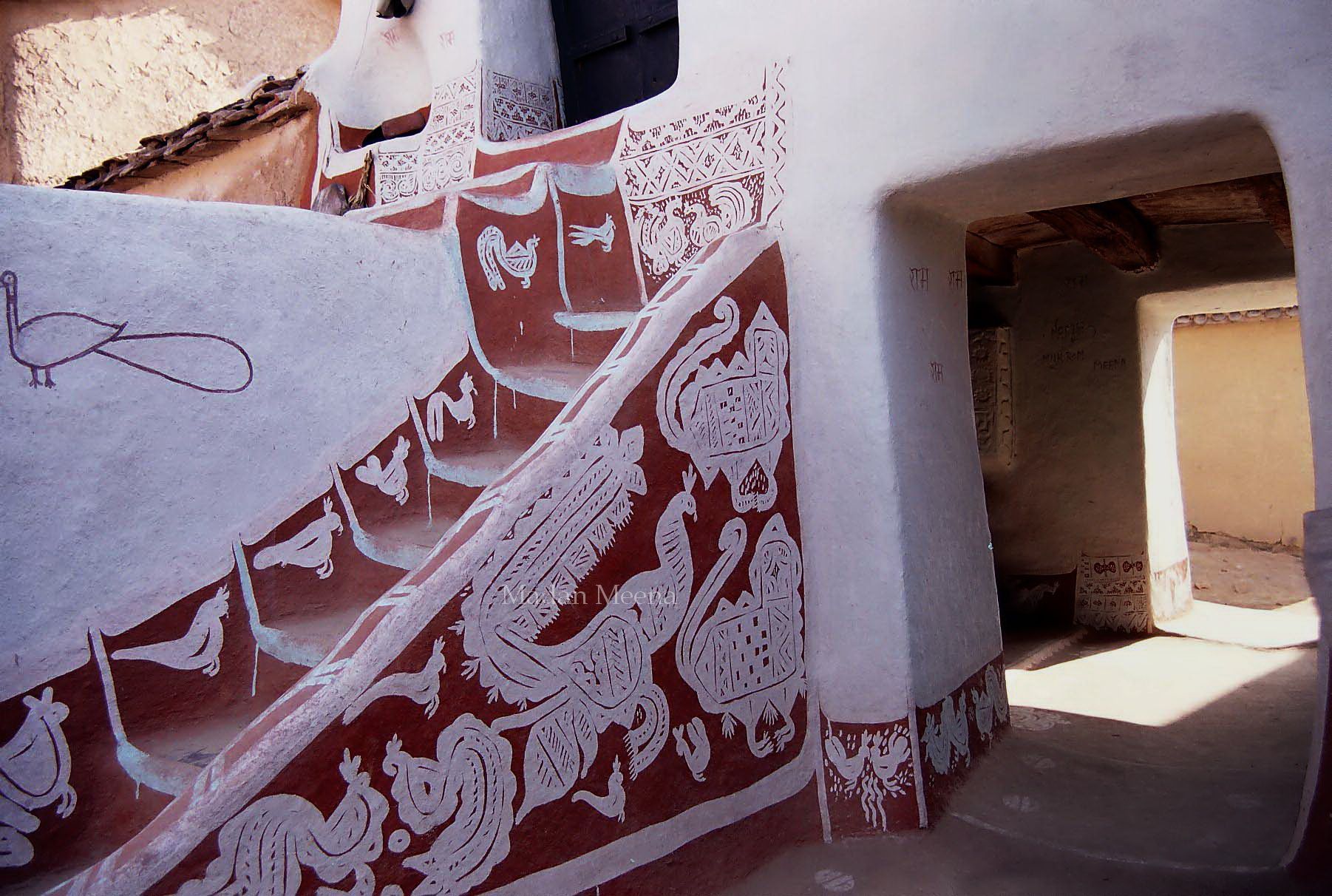
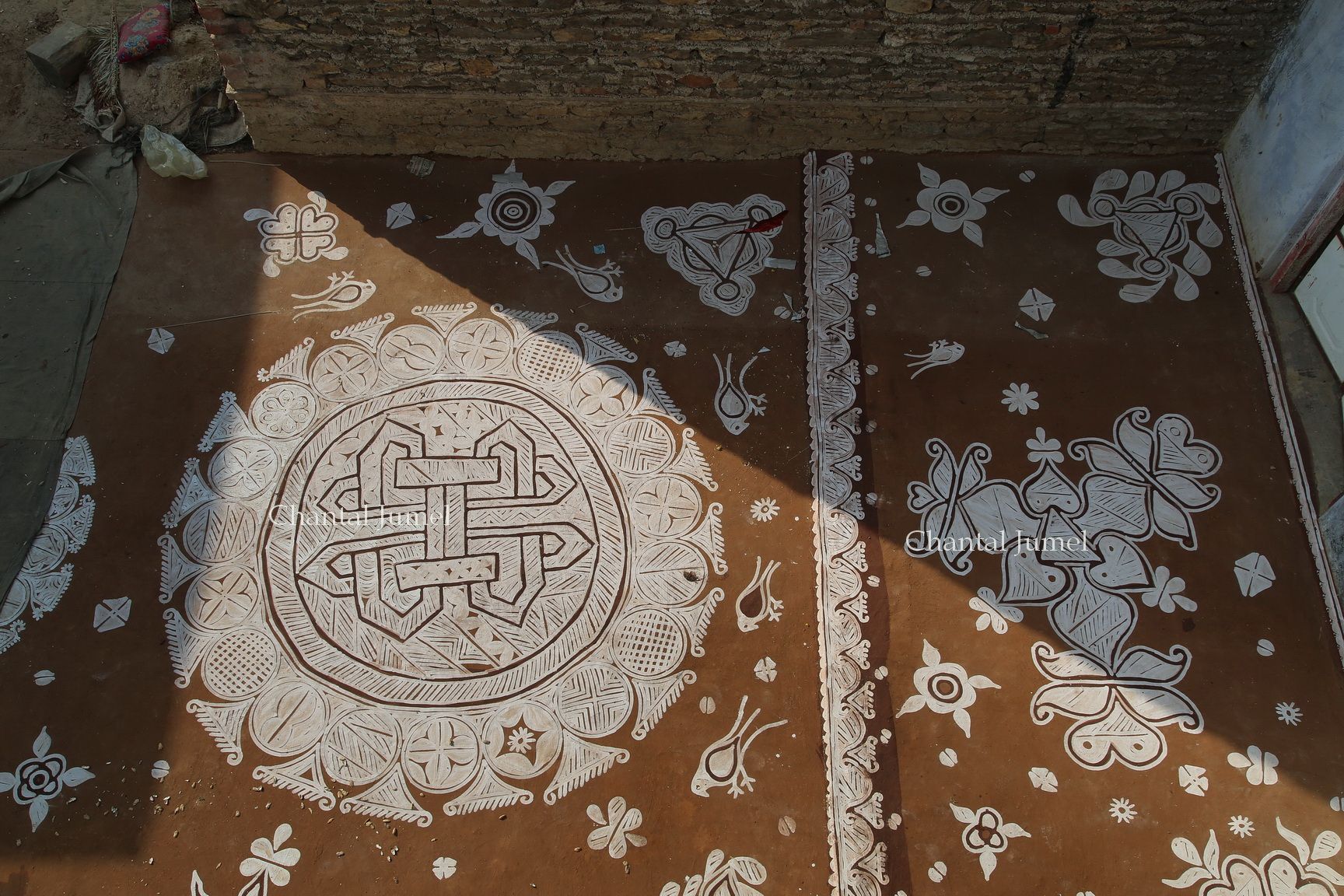
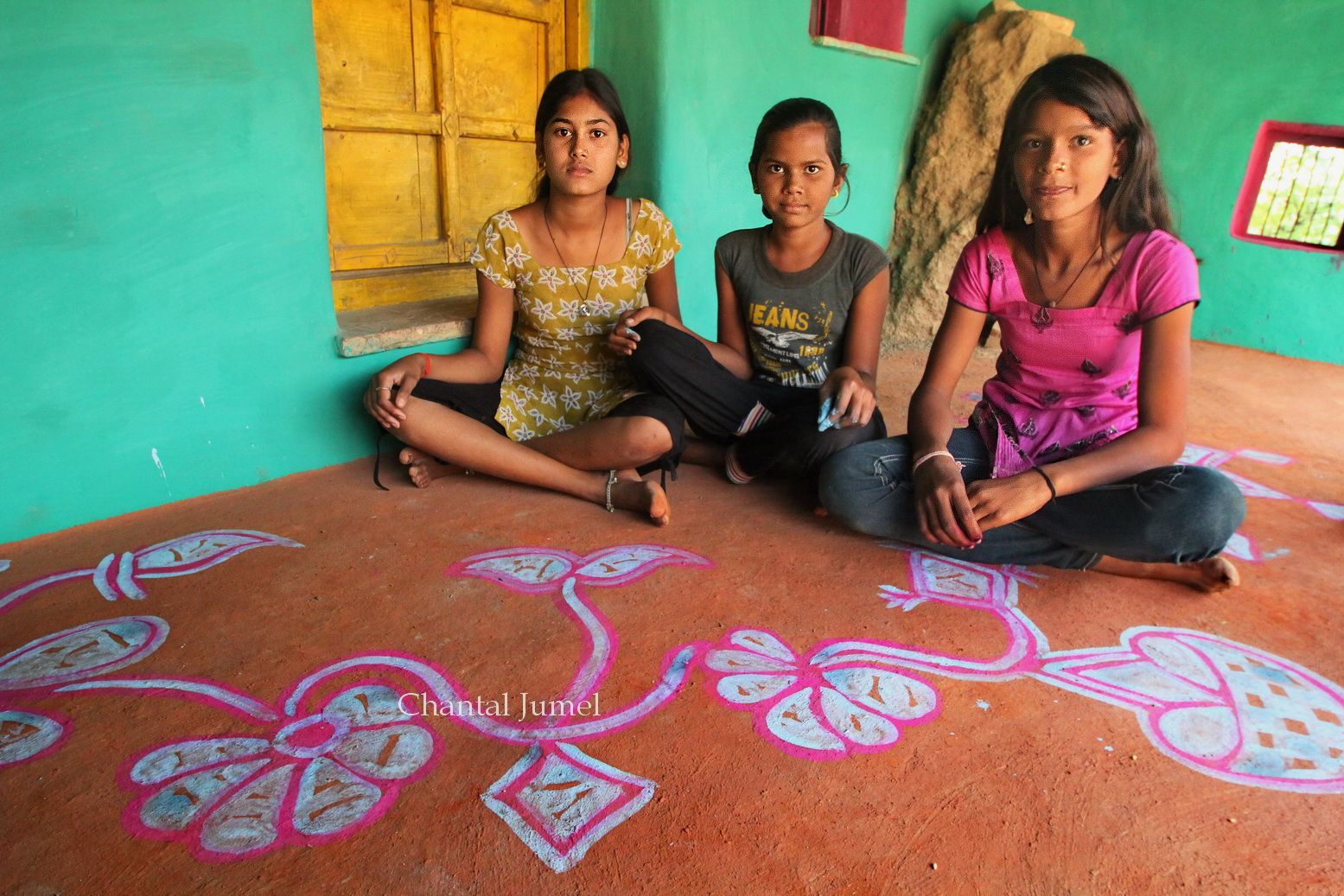
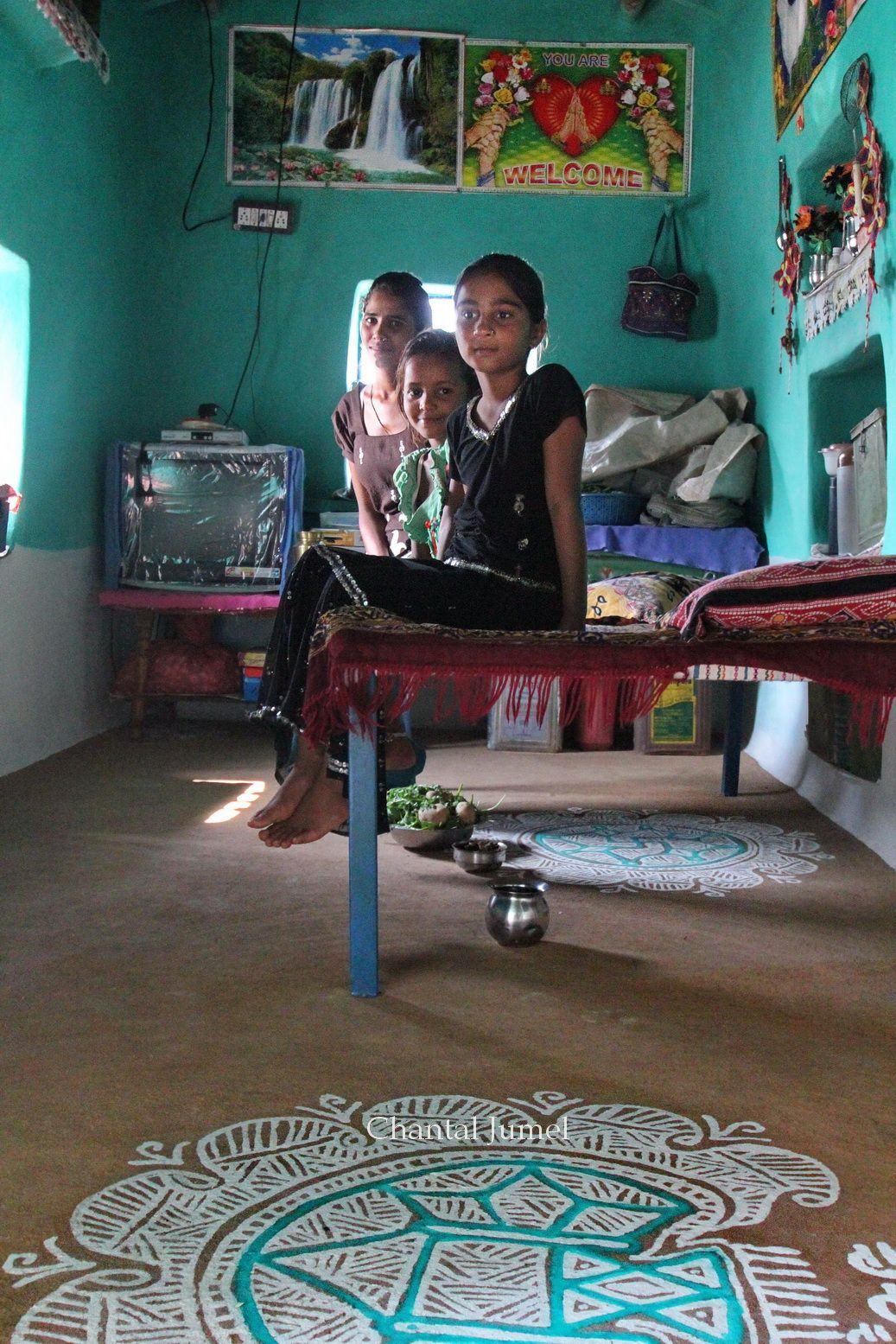
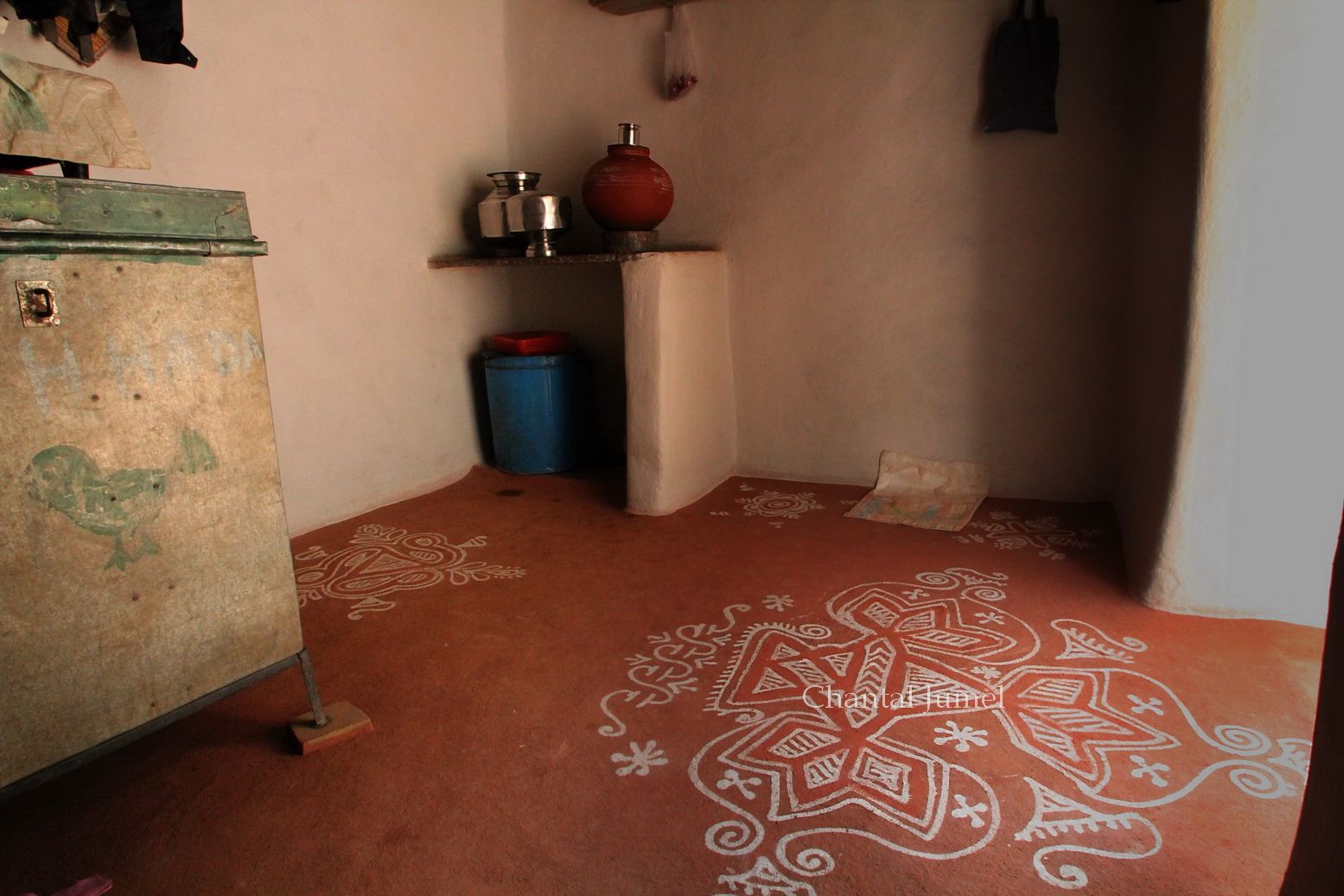
Adorning objects and tools
With fantasy and freedom, the immaculate lines highlight and transform everyday objects, tools, and furniture both indoors and outdoors. The opalescent curves underline the shape of the open-air hearth called chulha. The Meena women regularly smear the open-air stove with clay and geru and the clay utensils used to hold the chulha ashes are also painted.
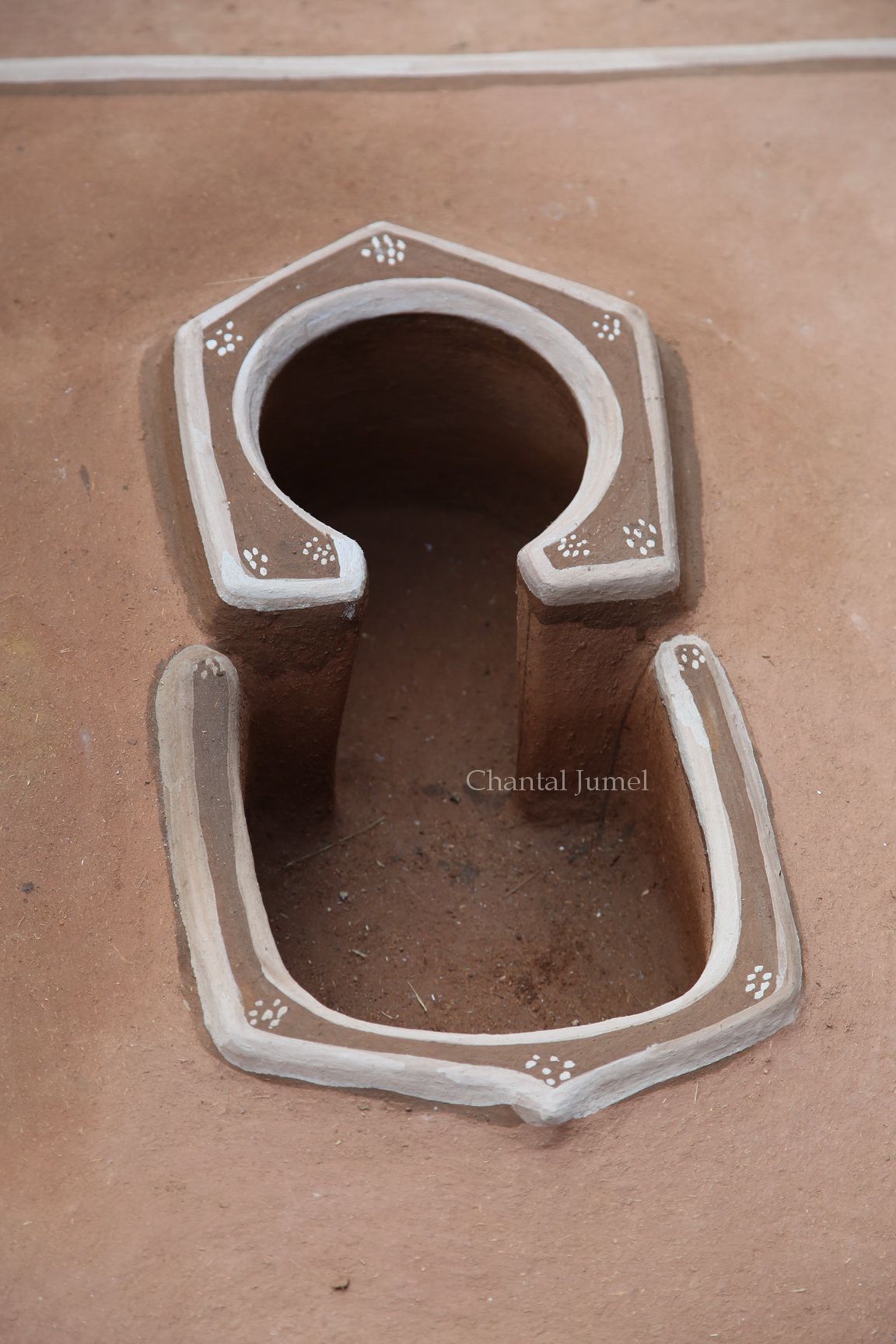
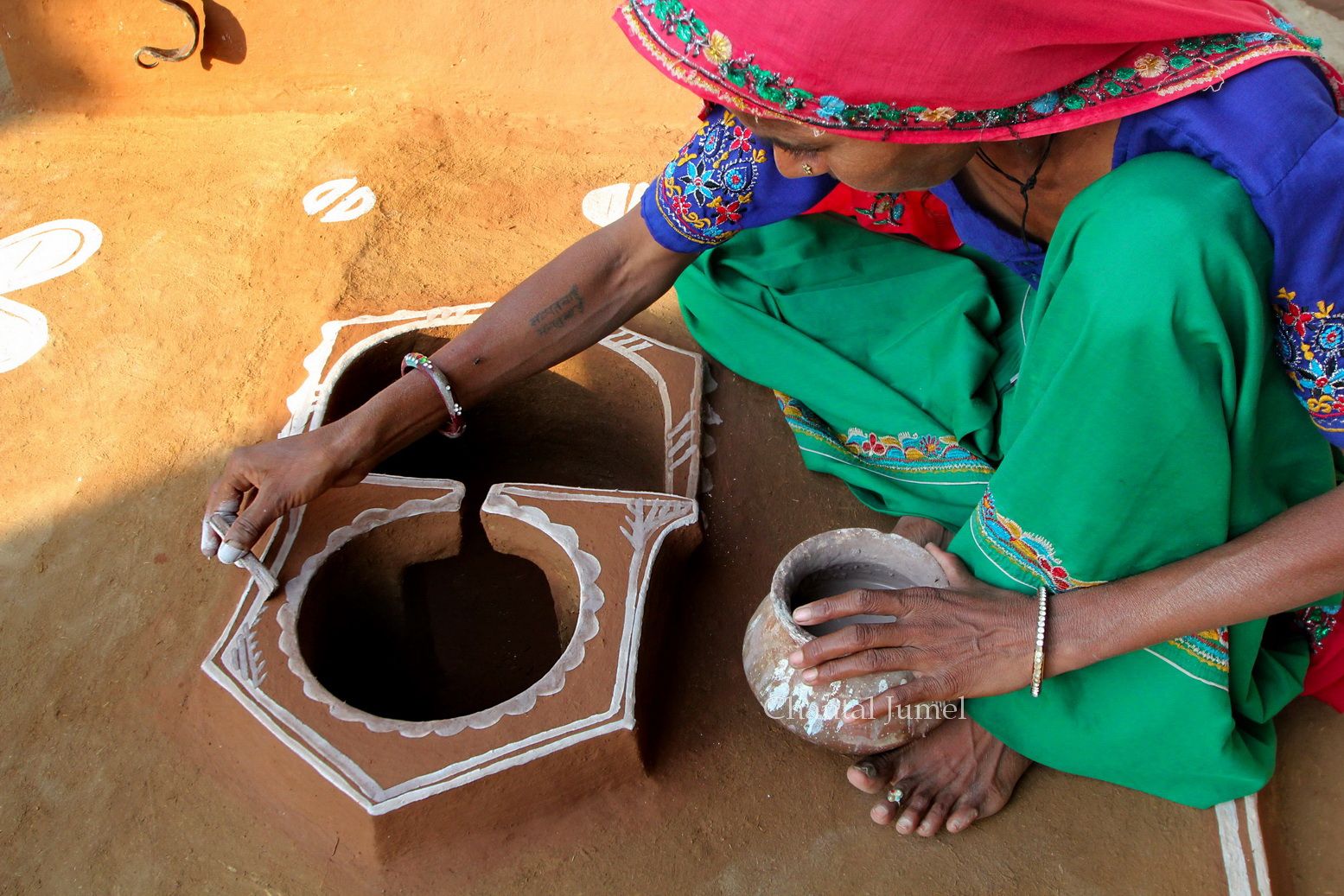
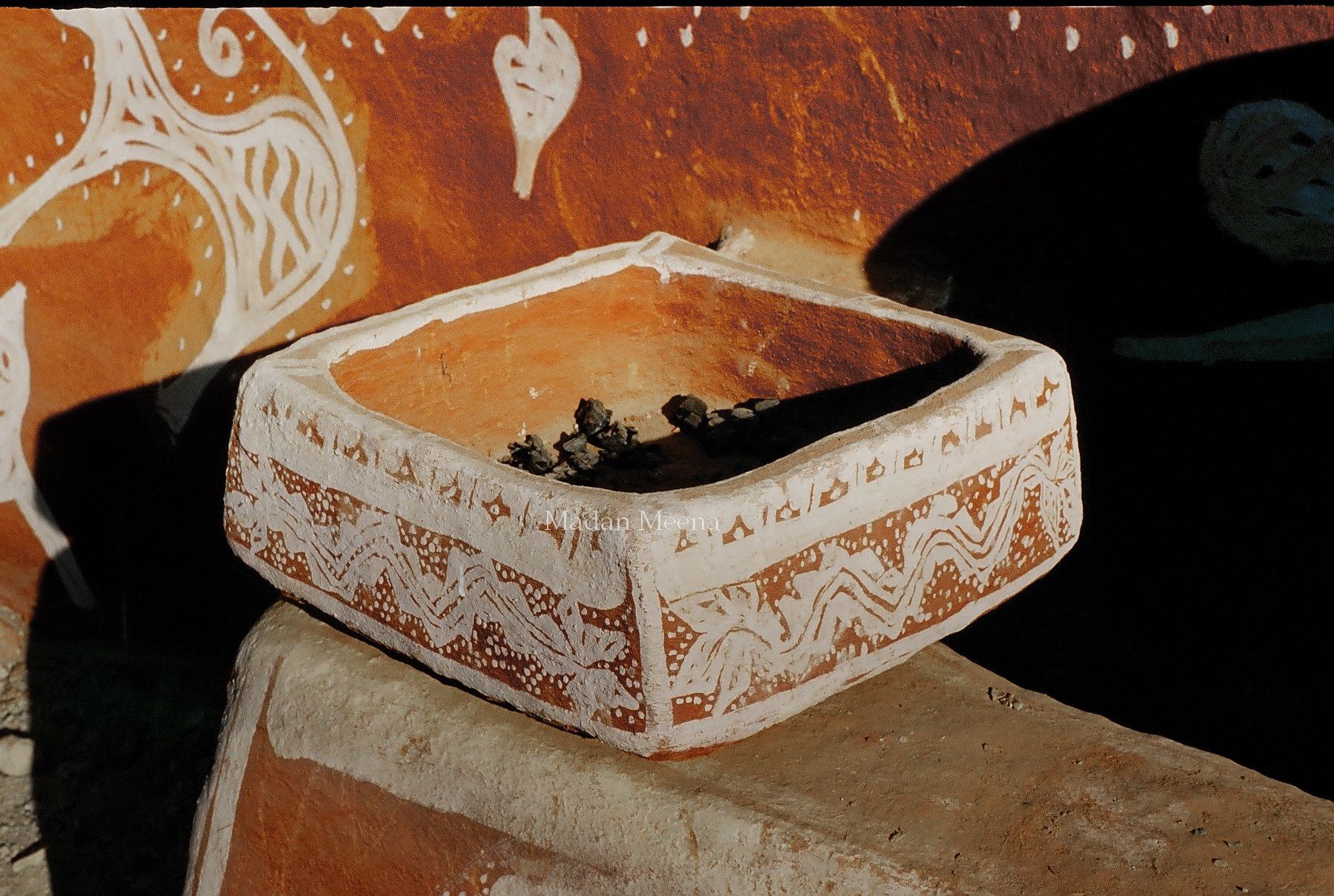
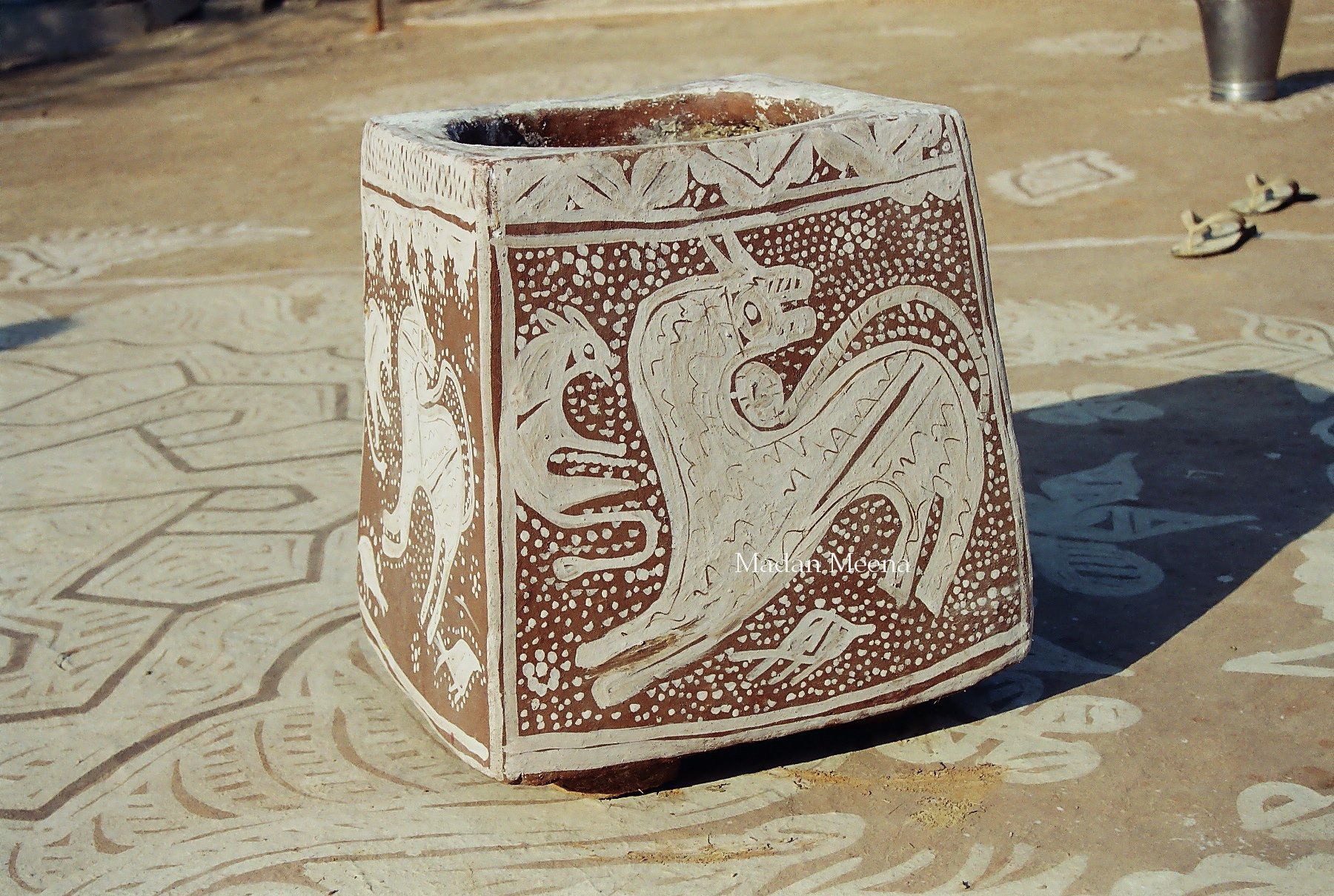
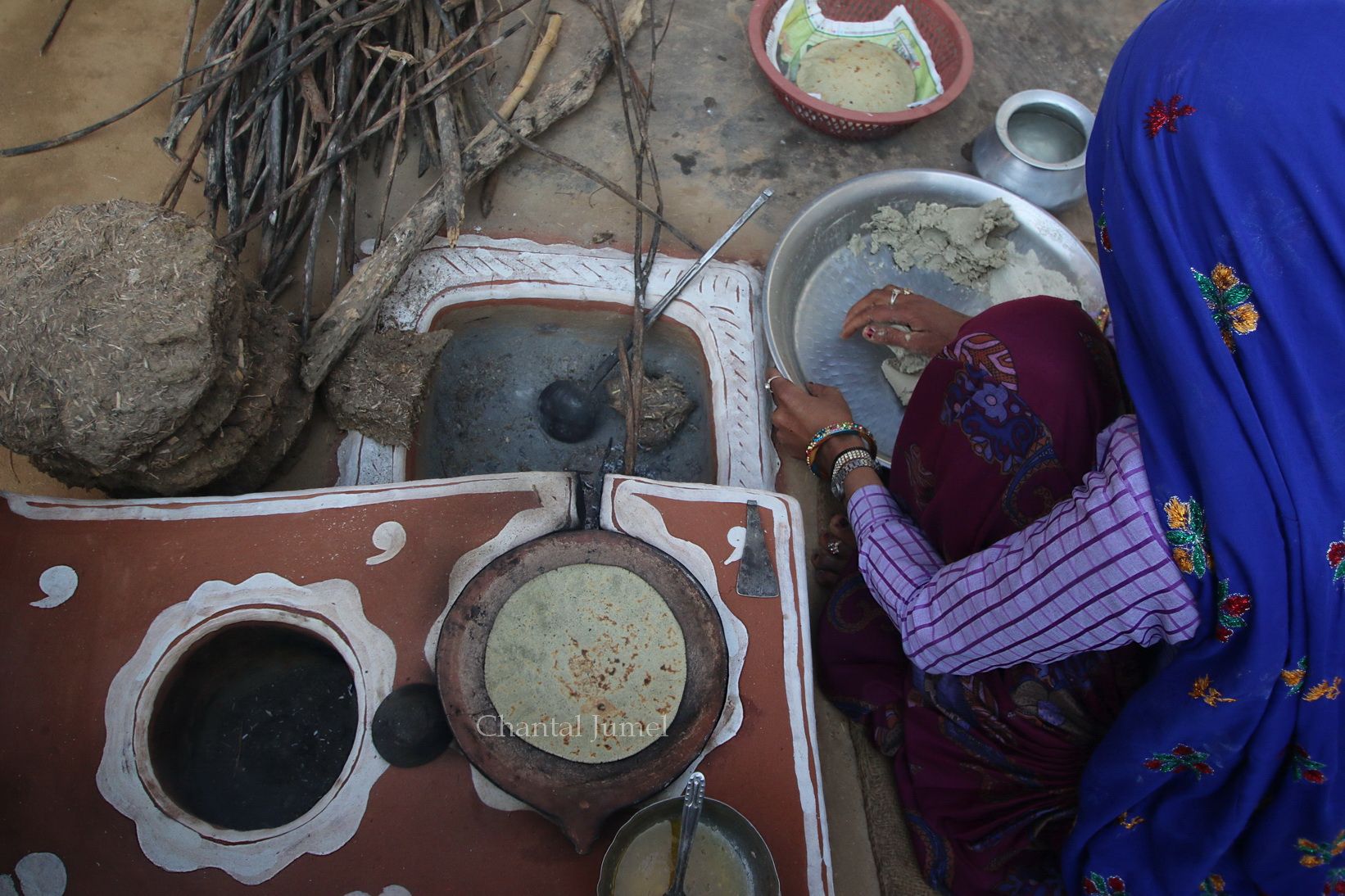
The kotha (grand storage cabinet) or kothi (small storage cabinet) is an important storage element for food and expensive items in a Meena home. Many have elaborated mandana which abound in floral and geometric patterns along with forms of birds and animals. Meena women also excel at creating floral or geometric designs in relief on the clay surfaces of the storage element. Mud relief images of God Ganesha or the swastika are sculpted as symbols of prosperity and embellished with circular mirrors.
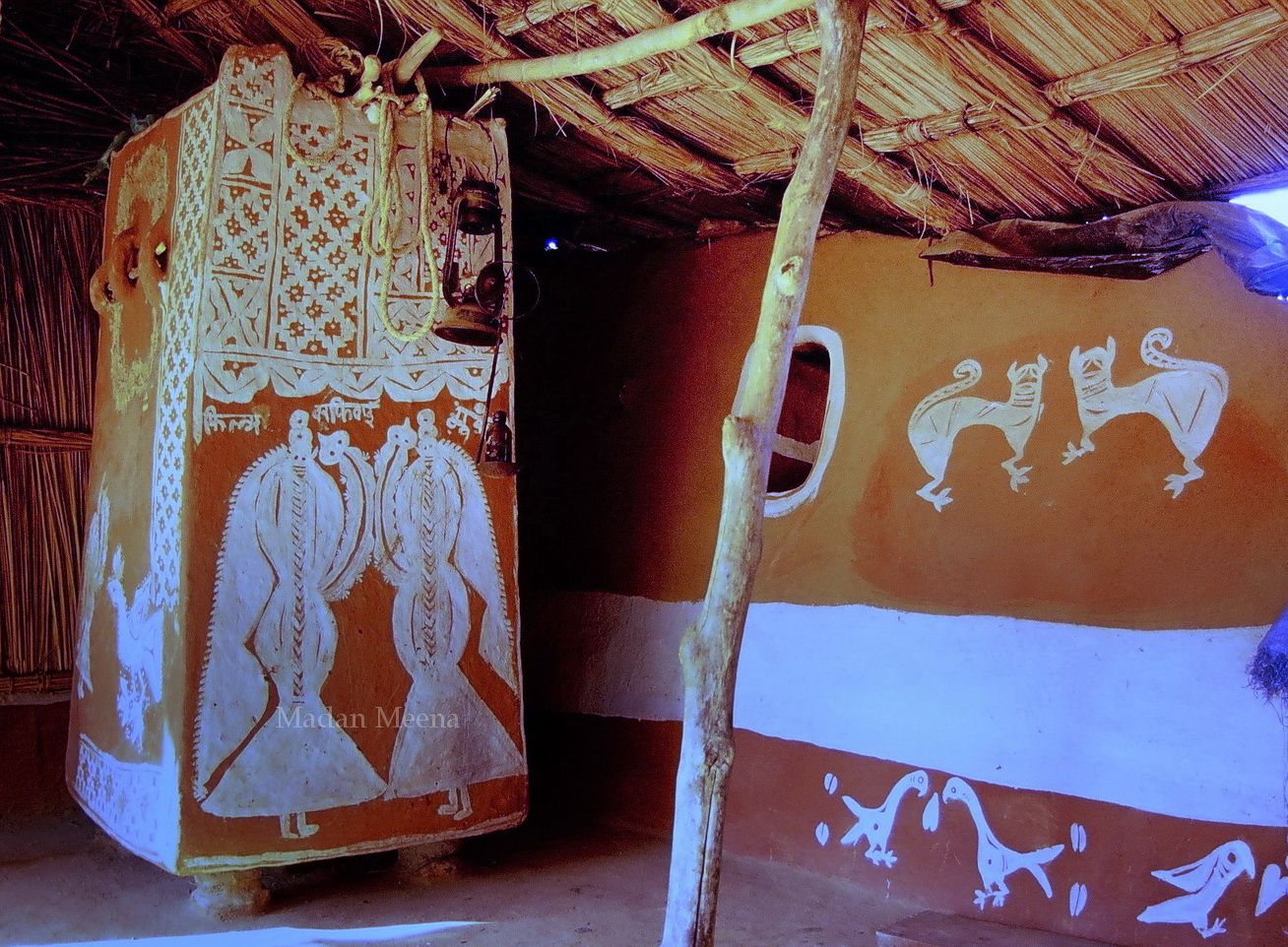
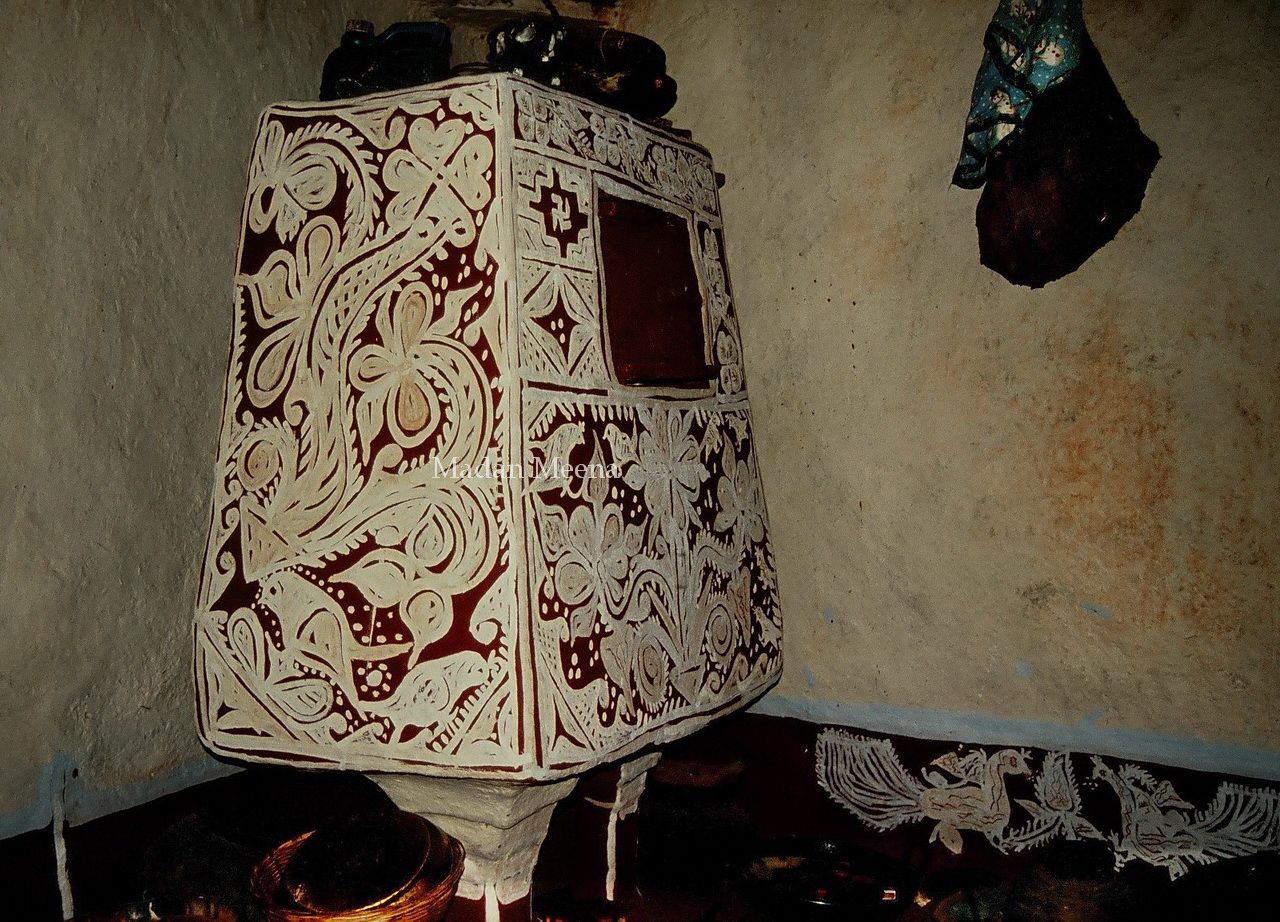
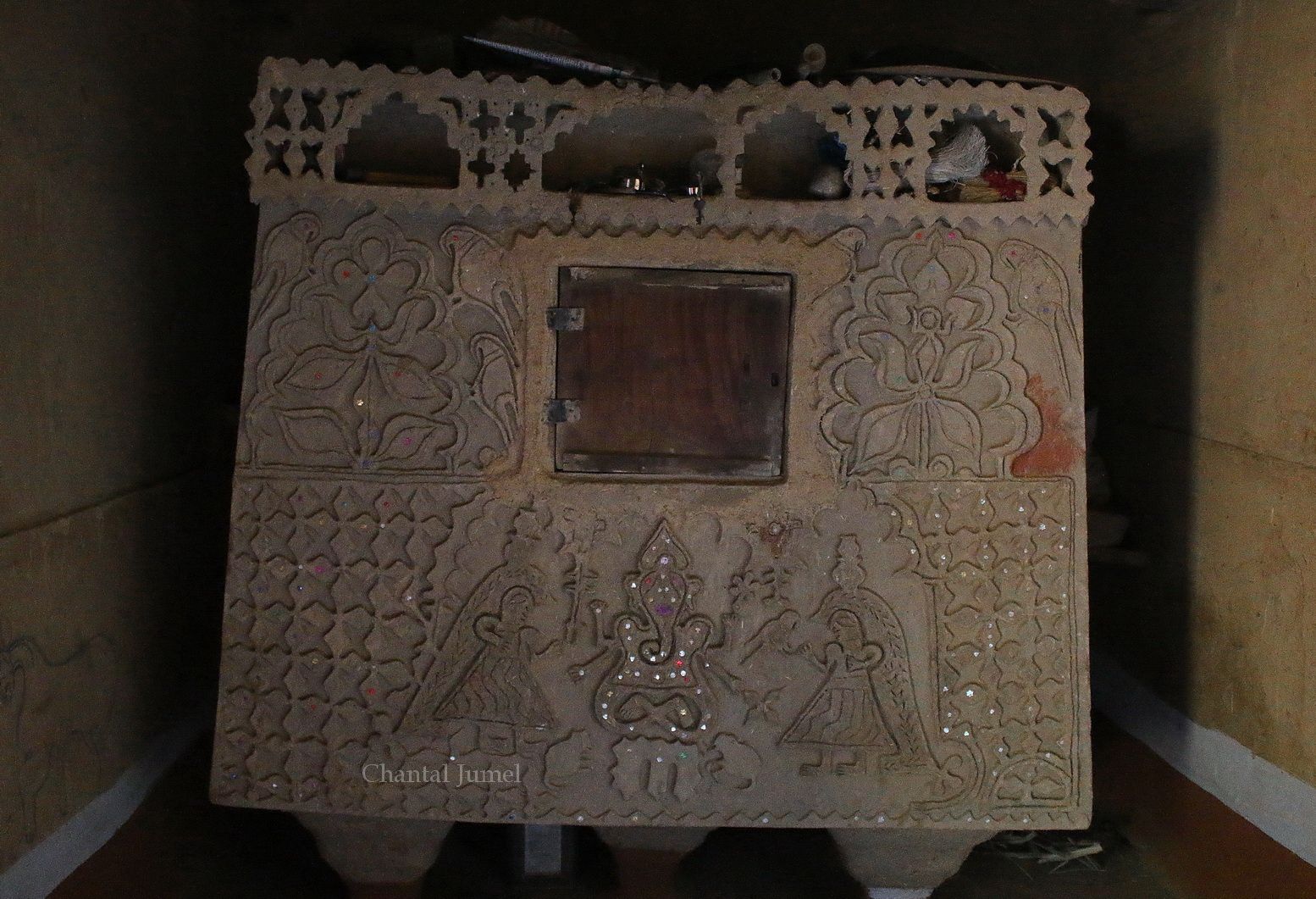
Previous articles:
Rajasthan mandana, "Jodhpur, the quest begins" — part 1
Rajasthan mandana, "Preparing Diwali at Lakshmi's home" — part 2
Rajasthan mandana , "Bundi and nearby villages" — part 3
Rajasthan mandana paintings, "Books and references"
Story to be followed...
